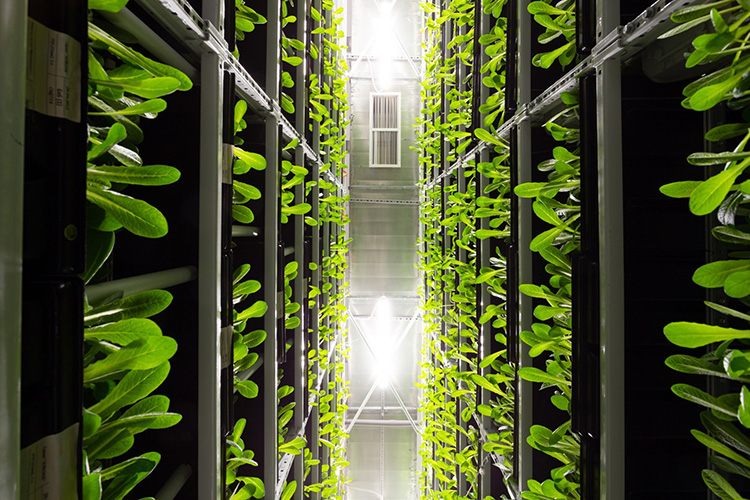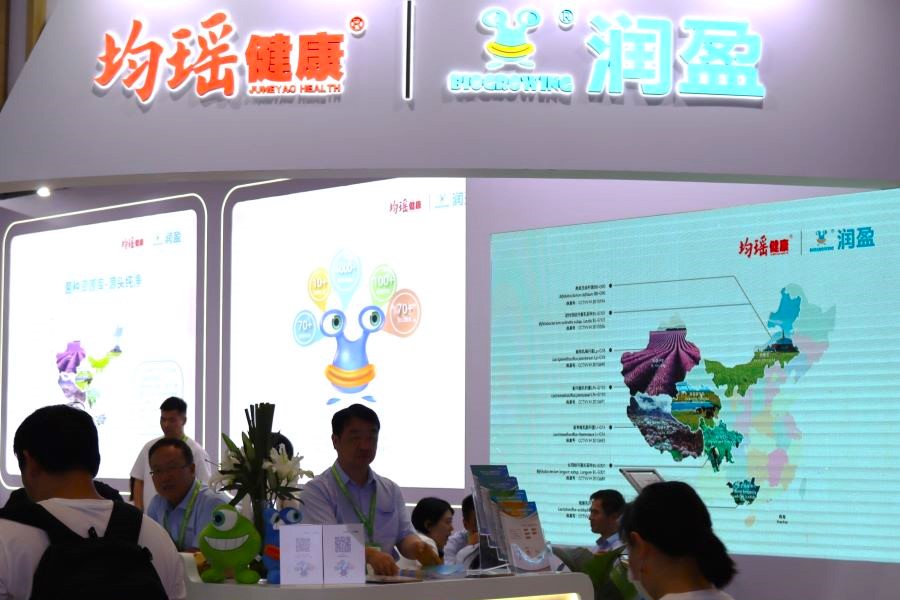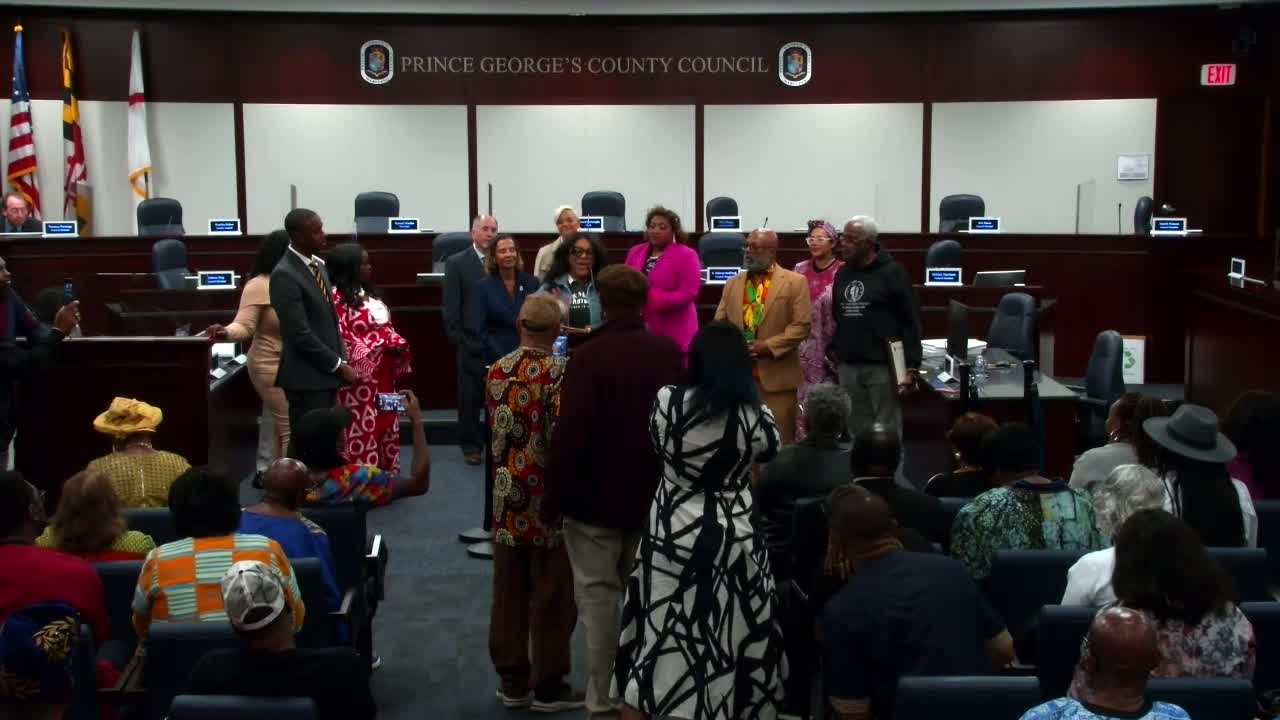Report on the Status of the Rural Energy for America Program (REAP) and its Alignment with Sustainable Development Goals (SDGs)
Program Mandate and SDG Linkages
The United States Department of Agriculture’s (USDA) Rural Energy for America Program (REAP) provides federal grants and loan guarantees to farmers and rural small businesses for energy efficiency and renewable energy systems. The program is a critical mechanism for advancing several Sustainable Development Goals (SDGs), including:
- SDG 7 (Affordable and Clean Energy): By financing solar panels and other renewable systems, REAP directly increases access to clean energy in rural communities.
- SDG 8 (Decent Work and Economic Growth): The program supports the economic viability of rural enterprises by reducing operational costs, fostering resilience, and promoting sustainable business practices.
- SDG 2 (Zero Hunger): By enhancing the financial stability of agricultural producers, REAP contributes to a more secure and sustainable food production system.
- SDG 13 (Climate Action): REAP is a key tool for climate change mitigation by facilitating the transition from fossil fuels to renewable energy sources at the farm and small business level.
Analysis of Program Disruptions and their Impact on SDG Progress
Chronology of Disruptive Events
Recent administrative actions have created significant uncertainty and operational delays for the REAP program, undermining its capacity to contribute to SDG targets. Key events include:
- January 20, 2025: An Executive Order seeking to shift federal support away from renewable energy led to an immediate freeze of all REAP funding, including for obligated grants and loans.
- April 2025: After a delay of several months that caused financial strain and frustration for applicants, the USDA began releasing the frozen REAP funds.
- June 30, 2025: The USDA announced a delay in the opening of the Fiscal Year (FY) 2026 grant application window, citing a backlog of applicants due to the program’s popularity.
- August 19, 2025: The Secretary of Agriculture issued a memo outlining fundamental changes to the program, effective immediately, without providing detailed implementation guidance.
Key Policy Changes and Their Implications
The August 19, 2025, memo introduced changes that directly impact the program’s alignment with SDG 7 and SDG 13. These changes include:
- Deprioritization in the grant program and restrictions in the loan guarantee program for ground-mounted solar systems larger than 50kW.
- Uncertainty regarding the eligibility of solar technologies manufactured outside of the United States, potentially impacting project feasibility and affordability.
Stakeholder Impacts and Setbacks for SDG Targets
Economic and Operational Impacts on Rural Enterprises
The ongoing instability has eroded trust between the USDA and rural stakeholders, creating direct setbacks for SDG 8. The lack of reliable support has led to significant negative consequences:
- A grant writing firm reported that over 100 grant applications, representing more than $20,000,000 in clean energy projects, have been stalled.
- Farmers have been forced to continue using inefficient, decades-old equipment or restructure finances after being unable to access anticipated grant funding.
- This uncertainty undermines the economic stability of small and midsized farms, which are already facing difficult economic conditions, thereby threatening progress toward SDG 2.
Implications for SDG 7 (Affordable and Clean Energy)
The new restrictions pose a direct threat to achieving affordable and clean energy goals in rural areas. Solar energy is the most popular technology choice for REAP applicants, accounting for 72% of all grant projects. The proposed changes could severely limit access to this technology:
- The Department of Energy estimates that 85% of solar modules installed in the U.S. are imported. A sudden restriction on foreign-made panels could dramatically increase project costs, pricing out the small farmers REAP is designed to serve.
- This would hinder the adoption of clean energy, slowing progress on SDG 7 and SDG 13.
Data Analysis of REAP’s Contribution to Sustainable Development
Program Popularity and Reach
REAP has a proven track record of successfully supporting sustainable development in rural America. Since its inception, the program has:
- Funded over 19,000 projects.
- Provided more than $1.8 billion in direct support to farmers, ranchers, and rural businesses.
- Awarded 46% of its grants to businesses in the agriculture, forestry, fishing, or hunting sectors.
- Supported approximately 3,378 solar projects for agricultural businesses alone.
Analysis of Projects Affected by New Restrictions
Data analysis suggests that the justification for the new restrictions—preventing solar development on productive farmland—may be misaligned with the program’s actual impact. An examination of past projects reveals:
- Of the 3,378 solar grants awarded to agricultural businesses, a maximum of only 152 projects (approximately 4.5%) involved ground-mounted systems over 50kW.
- Many of these larger systems were not installed on productive cropland but were situated near infrastructure like warehouses or poultry barns to meet high on-site energy demands.
- A blanket deprioritization fails to account for the diverse operational needs of farms and could unnecessarily restrict projects that advance both SDG 7 and SDG 2 without compromising agricultural land.
Conclusion and Recommendations for Program Stability
Summary of Findings
The recent administrative changes and lack of clear guidance for the REAP program have created significant instability. This uncertainty undermines the program’s effectiveness as a tool for achieving key Sustainable Development Goals, particularly SDG 7 (Affordable and Clean Energy) and SDG 8 (Decent Work and Economic Growth). The disruption has stalled critical clean energy projects, eroded trust with rural communities, and threatens to make cost-saving technologies inaccessible to the farmers and small businesses who need them most.
Recommendations
To ensure REAP remains a functional and reliable program that advances the SDGs, the following actions are recommended:
- The USDA must issue immediate and concrete guidance detailing how the new priorities will be implemented and clarifying the program’s timeline.
- Policy revisions, particularly those concerning domestic sourcing, must be carefully structured to support domestic innovation (SDG 9) without cutting off access to affordable and proven technologies for farmers.
- Future program changes should be based on data-driven analysis of their real-world impact on agricultural operations and land use, ensuring policies support rather than hinder progress on SDG 2 and SDG 7.
- The USDA should prioritize rebuilding trust with stakeholders to strengthen the public-private partnerships essential for achieving sustainable development in rural America (SDG 17).
Analysis of Sustainable Development Goals in the Article
1. Which SDGs are addressed or connected to the issues highlighted in the article?
-
SDG 7: Affordable and Clean Energy
The article’s central theme is the Rural Energy for America Program (REAP), which directly supports investments in renewable energy systems, specifically solar panels, and energy efficiency for farmers and rural businesses. This aligns perfectly with the goal of ensuring access to affordable, reliable, sustainable, and modern energy for all.
-
SDG 8: Decent Work and Economic Growth
The REAP program is designed to bolster the economic viability of farmers and rural small businesses. By providing grants and loans, it helps them reduce operational costs, diversify revenue, and remain competitive, especially during “the toughest economic conditions in decades.” This supports sustained, inclusive, and sustainable economic growth and productive employment.
-
SDG 9: Industry, Innovation and Infrastructure
The program encourages the adoption of modern, clean technologies and the upgrading of infrastructure on farms and in rural businesses. The article mentions farmers using “decades old grain dryers” because funding for new, more efficient equipment was stalled. The adoption of solar technology represents a significant infrastructural and technological upgrade for these enterprises, making them more sustainable and resilient.
-
SDG 12: Responsible Consumption and Production
By promoting energy efficiency and the switch to renewable energy sources like solar, the REAP program helps the agricultural sector move towards more sustainable production patterns. This reduces the environmental footprint of farming operations and encourages the efficient use of natural resources (energy).
-
SDG 13: Climate Action
The promotion and funding of solar energy projects are direct measures to combat climate change and its impacts. By helping the agricultural sector transition away from fossil fuels, the REAP program contributes to national climate mitigation efforts, aligning with the goal of taking urgent action to combat climate change.
2. What specific targets under those SDGs can be identified based on the article’s content?
-
Under SDG 7 (Affordable and Clean Energy):
- Target 7.2: “By 2030, increase substantially the share of renewable energy in the global energy mix.” The article highlights that “72% of all REAP grant projects are solar,” demonstrating the program’s role in increasing the share of renewable energy, particularly in the rural and agricultural sectors.
- Target 7.3: “By 2030, double the global rate of improvement in energy efficiency.” The REAP program is explicitly mentioned as providing “federal grants and loan guarantees for farmers and rural small businesses to invest in energy efficiency and renewable energy systems.”
- Target 7.a: “By 2030, enhance international cooperation to facilitate access to clean energy research and technology… and promote investment in energy infrastructure and clean energy technology.” The article discusses investment through the REAP program and touches upon the global supply chain for clean energy technology, noting that “85% of the solar modules installed in the US are imported.”
-
Under SDG 8 (Decent Work and Economic Growth):
- Target 8.3: “Promote development-oriented policies that support productive activities… and encourage the formalization and growth of micro-, small- and medium-sized enterprises…” The REAP program is a direct example of such a policy, providing over “$1.8 billion in direct support to farmers, ranchers, and rural small businesses.”
-
Under SDG 9 (Industry, Innovation and Infrastructure):
- Target 9.4: “By 2030, upgrade infrastructure and retrofit industries to make them sustainable, with increased resource-use efficiency and greater adoption of clean and environmentally sound technologies…” The program facilitates the adoption of solar panels and energy-efficient equipment, which is a direct upgrade of infrastructure to make agricultural operations more sustainable.
3. Are there any indicators mentioned or implied in the article that can be used to measure progress towards the identified targets?
-
For SDG 7 Targets:
- Indicator for Target 7.2 (Renewable Energy Share): The article provides specific data points that can serve as indicators, such as the “72% of all REAP grant projects are solar” and the “approximately 3,378 REAP grants for solar projects with businesses classed as agriculture, forestry, fishing, or hunting.” The size of installations (e.g., “50kW,” “1.2MW”) also indicates the scale of renewable energy adoption.
- Indicator for Target 7.a (Investment in Clean Energy): The total financial support provided by the program, “$1.8 billion in direct support,” serves as a direct indicator of investment. The article also highlights a negative indicator: the stalling of “over $20,000,000 in projects” for a single firm due to program uncertainty.
-
For SDG 8 Targets:
- Indicator for Target 8.3 (Support for SMEs): The number of beneficiaries is a key indicator. The article states that “REAP has funded more than 19,000 grants” for “farmers, ranchers, and rural small businesses.” The disruption to this support is also measured, with one firm having “more than 100 grant applications on hold.”
-
For SDG 9 Targets:
- Indicator for Target 9.4 (Adoption of Clean Tech): The number of projects funded (“more than 19,000 grants”) and the specific number of solar projects (“approximately 3,378” for agricultural businesses) are direct indicators of the adoption rate of clean technologies facilitated by the program.
4. Table of SDGs, Targets, and Indicators
| SDGs | Targets | Indicators |
|---|---|---|
| SDG 7: Affordable and Clean Energy |
7.2: Increase share of renewable energy.
7.3: Improve energy efficiency. 7.a: Promote investment in clean energy technology. |
– Percentage of REAP projects that are solar (72%). – Number of solar grants to agricultural businesses (approx. 3,378). – Mention of REAP funding for “energy efficiency” systems. – Total direct support provided by the program ($1.8 billion). – Value of stalled projects for one firm ($20,000,000). |
| SDG 8: Decent Work and Economic Growth | 8.3: Promote policies that support small- and medium-sized enterprises. |
– Total number of grants funded for farmers and rural businesses (more than 19,000). – Percentage of grants awarded to agriculture, forestry, fishing, or hunting businesses (46%). – Number of grant applications put on hold for one firm (more than 100). |
| SDG 9: Industry, Innovation and Infrastructure | 9.4: Upgrade infrastructure and industries to be sustainable with clean technologies. |
– Number of farms and rural businesses adopting solar technology through REAP grants. – Mention of replacing “decades old grain dryers” with new, efficient equipment. – Specific examples of infrastructure upgrades (e.g., a 59kW array for a potato warehouse, a 1.2MW system for poultry barns). |
| SDG 12: Responsible Consumption and Production | 12.2: Achieve the sustainable management and efficient use of natural resources. |
– Implied reduction in fossil fuel consumption on farms. – Program’s goal to help farmers become “more energy efficient.” |
| SDG 13: Climate Action | 13.2: Integrate climate change measures into national policies and planning. |
– The existence and function of the REAP program as a federal policy supporting renewable energy. – The Executive Order seeking to “shift federal support away from renewable energy” as a negative indicator of policy integration. |
Source: sustainableagriculture.net







